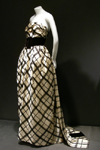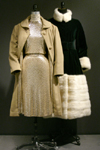|
The
democratization of luxury has been an important marketing
phenomenon for decades, hence the term “populuxe,” to describe
popular luxuries of 1950s America, such as the Cadillac. But the
idea of “marketing luxury to the masses” has received increasing
attention in recent years. If luxury in the 1980s was about
showing off, and luxury in the 1990s was more of a niche
concept, many observers believe that today there exist two
divergent ideas of luxury -- the Old Luxury, which is rooted in
tradition and craftsmanship, and the New Luxury, which is more
style-driven and accessible.
Old Luxury tends to be associated with European elegance,
inherited wealth and status, New Luxury with contemporary design
and American marketing techniques. Many of the world’s most
prestigious luxury brands have a long history. Hermès, for
example, was founded in 1837, and Louis Vuitton in 1854. An
Hermès handbag is not only a luxury item, it is also a status
symbol. The famous H logo -- like the LV monogram of Louis
Vuitton, the double C’s of Chanel, and the double F’s of Fendi
-- functions like an artist’s signature, attesting to the
authenticity of the product, and thus its value.
Counterfeits of famous luxury brands are an unwelcome testimony
to their prestige among the general public. Moreover, awareness
of a luxury fashion brand among affluent consumers is no
guarantee that they will accord it high social status. The
perceived value of a brand can drop if it appears to go
“down-market,” and as designer labels become more widely
available, they can lose the cachet of exclusivity. Logos may be
losing their luster as the display of status becomes more
complex.
previous page
next
page |
|
|
 |
 |
| |
This exhibition was organized by Dr. Valerie Steele, Tamsen
Schwartzman, and Fred Dennis, with assistance from Clare Sauro, Harumi Hotta, and
Lynn Weidner, and with special thanks to Julian Clark. It has been made possible thanks to the generosity of
the members of the Couture Council.
Website designed by Tamsen Schwartzman. |
|
| |
|
|
|
|